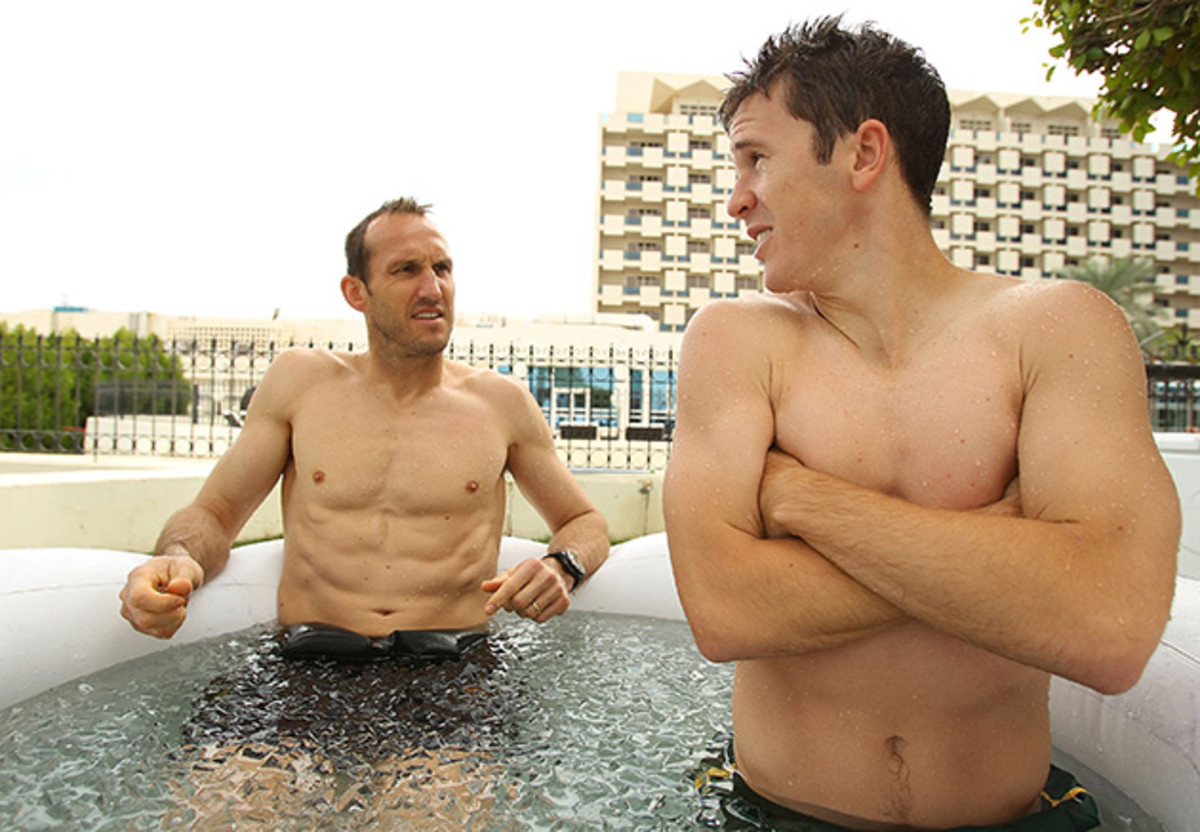The Cold Truth: World Cup Players Rely on the Ice Bath's Benefits

Ladies, and especially gentleman, take a deep breath. Imagine that you have just pushed your body to the limit on the soccer field. You have cooled down and stretched. And now you are going to get belly-button-deep in a pool of ice water. Trust your medical staff, it’s all good.
Welcome to the ice bath.
“I have grown to love it,” says U.S. national team and Sporting Kansas City defender Matt Besler. “Maybe for the first two minutes, it’s a shock. But the next eight minutes are really enjoyable.”
For members of Jurgen Klinsmann’s U.S. team, ice baths are mandatory after most practice sessions and games. Besler says the 55-degree dip never felt so good as it did after the U.S. team’s 2-2 tie with Portugal in the 90-degree heat and choking humidity of Manaus.
“It was like a dip in the pool,” says Besler. “It felt really good.”
The Science Behind World Cup Success
Of course, it’s not just about cooling off after a game. There is science behind the concept of the ice bath, which has been advocated by long distance runners for many years.
“The scientific term is vasoconstriction,” says John Gallucci, Major League Soccer’s medical coordinator and author of the book Soccer Injury Prevention and Treatment: A Guide to Optimal Performance for Players, Parents, and Coaches. “The idea is to decrease the opportunity of swelling throughout the legs, so they regenerate more quickly. When you’re running around, your circulatory system increases dramatically. And when you stop running and you cool down, between knocks in the game, you want to slow down the blood and make vasoconstriction occur by taking an ice bath. It decreases swelling of the musculature of your body. A lot of running athletes feel that it really helps in their recuperation process.”
Besler says that Klinsmann didn’t have to convince him of the benefits of the ice bath. It is something he has been doing since his high school and youth soccer days in Kansas.

“I think it’s extremely beneficial to your body,” Besler says. “I remember at club soccer tournaments, when I was 17, we’d fill up a bathtub with ice and water and one by one, we’d get in. And then when I went to Notre Dame, we had cold plunge tubs at the athletic facilities and I got to the point where I was doing it after almost every practice and every game. With the national team, it was new to some guys, but not to me. At the World Cup, you’re in a tournament and you need to recover within three or four days for the next match, so it’s really helpful."
While Besler is a full-on proponent of the ice bath, he acknowledges that it’s not everyone’s favorite form of therapy. With the U.S. team, some players beg out after eight minutes. With Sporting KC, Besler says it has become customary to make rookies get fully submerged.
Says Gallucci, “It is shocking. You’re hot, you cool down, you do your stretching, your body temperature comes down. But still your body temperature is 98 and you’re going into a tub that’s usually anywhere between 45 and 55 degrees. It’s been done for years. In the NFL, in soccer. I don’t know if it’s becoming trendier now, but it’s been done for years, most notably by long distance runners. But I believe it’s a matter of choice, not a matter of treatment. Athletes who feel the regeneration process of decreasing the inflammation helps them regenerate at a quicker rate, they are the ones who believe in the ice bath.”
